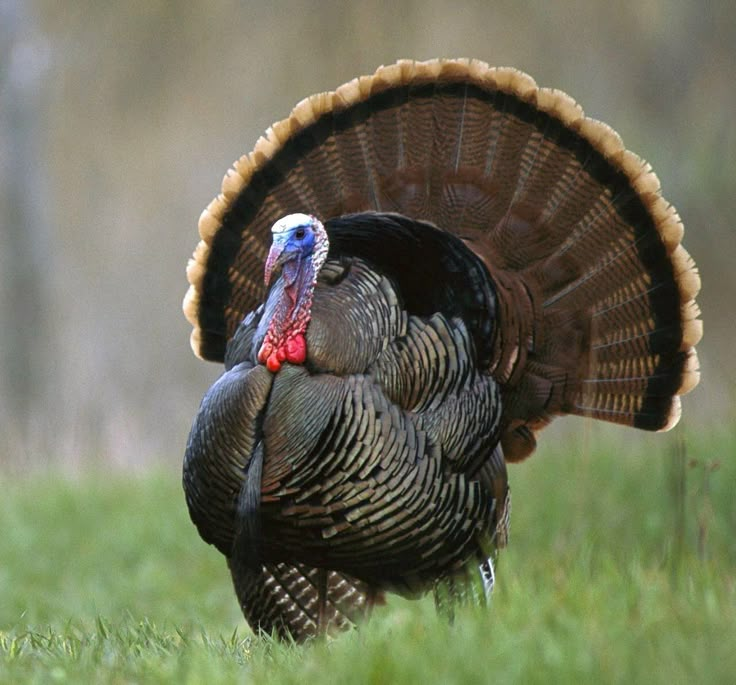The wild turkey (Meleagris gallopavo) has long stood as an emblem of American identity, entwined within the fabric of both Indigenous cultures and the narrative of European settlers. The question of whether turkeys are native to America delves into a nuanced exploration of natural history and cultural perception. This examination extends beyond mere taxonomy, addressing the coalescence of species and cultural symbolism through the lens of cultural relativism.
To contend with the essence of the wild turkey as an indigenous species necessitates an understanding of its origins. Archaeological and genetic evidence indicates that turkeys emerged in North America approximately 20 million years ago. Wild turkeys are believed to have been domesticated by Indigenous peoples around 2000 years ago in Mesoamerica, which subsequently played a pivotal role in cultural practices ranging from culinary traditions to spiritual beliefs. Their domestication reflects a profound utilization of natural resources, inherently underscoring the relationship Indigenous populations fostered with their environment.
The turkey’s significance extends beyond ecological presence; it embodies a complex interplay of cultural identity. For many Native American tribes, the wild turkey was woven into the social and spiritual fabric of their societies. This avian species transcended its biological existence, representing sustenance, ritual, and community cohesion. For instance, the Wampanoag people, who shared the land with the Pilgrims, considered the turkey not only as a vital food source but also as a symbol in various cultural ceremonies.
When the European settlers arrived, their perception of the turkey diverged considerably. The settlers brought with them a tapestry of cultural practices and culinary customs that included a variety of domesticated fowl, yet they quickly grew enamored with the wild turkey. Its sizable stature and distinctive plumage captivated early colonists. Benjamin Franklin famously advocated for the wild turkey as a national symbol over the bald eagle, asserting that the turkey was a more virtuous bird. Franklin’s preference, albeit contentious, highlights the deeper implications of national identity, illustrating how a species can cultivate representations of liberty and democracy.
The “national bird” debate underscores a crucial component of cultural relativism—how different societies ascribe varying meanings to the same entity. For the Indigenous populations of North America, the wild turkey held an established legacy prior to European contact, while for settlers, it became a novel representation of their aspirations. This juxtaposition prompts an inquiry into how historical narratives are constructed and the implications of those narratives on present-day iconography.
Interestingly, the broader fascination with the turkey extends into contemporary times. The wild turkey, which once epitomized thanksgiving and harvest, has garnered a reputation as an object of reverence in hunting culture. The dramatic resurgence of wild turkey populations in the United States from the brink of extinction in the early twentieth century to a robust population today serves as a poignant narrative of conservation and environmental stewardship. Enthusiasts avidly pursue wild turkeys, captivated by the challenge they present in the field, reflecting a shift towards the appreciation of nature in modern American culture.
The transformation of turkeys from a staple in Indigenous diets to a cultural icon debunks a singular narrative, revealing a multilayered context fraught with historical exchanges. The integration of turkeys into American folklore, agrarian practices, and national celebrations such as Thanksgiving illustrates the dynamic relation between species and symbolic interpretations. It beckons the acknowledgment of the Indigenous contributions to conserving these birds and the ecosystems they inhabit.
To further explore this cultural phenomenon, one must consider the visual representations of turkeys within art and literature. From Audubon’s vivid illustrations to contemporary depictions, the turkey’s image oscillates between a symbol of bountiful harvest and a figure of festive celebration. These tropes convey not only aesthetic values but also signify broader sociocultural narratives that shape American identity. The turkey’s ability to transcend mere representation and become an object of national pride underscores the potency of cultural symbols in fostering unity amid diversity.
Nevertheless, it is critical to recognize that the turkey’s status as a national bird is not universally celebrated. Within the context of cultural relativism, one must approach the dialogue surrounding the turkey with an understanding of the multiplicity of experiences and values attached to it. For example, Native perspectives on turkeys are often juxtaposed with contemporary commercialization, which reflects a commodification of both cultural symbols and Indigenous traditions. This commodification raises ethical questions as it risks replicating historical patterns of appropriation and diluting the original meaning behind traditional uses of the bird.
In conclusion, the inquiry into the status of turkeys as native to America encapsulates a broader discourse on cultural identity and ecological stewardship. The wild turkey, with its rich history as both a creature of the land and a cultural icon, invites a critical examination of how species and symbols interlace within national narratives. The turkey’s legacy serves as a reminder that cultural relativism compels us to honor diverse narratives, recognizing that our cherished symbols are often borne from multilayered histories deserving of contemplation. Understanding the complex relationships we inherit and perpetuate draws us closer to a comprehensive appreciation of our natural and cultural heritage.
